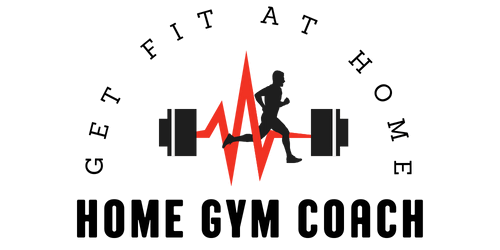In this article, you will discover helpful tips on how to modify your personalized workout plan to facilitate injury recovery. Whether you’re dealing with a sprained ankle, a strained muscle, or any other form of injury, it’s crucial to adjust your exercise routine to promote healing and avoid exacerbating the condition. By making small adjustments and incorporating specific exercises, you can continue to stay active and maintain your fitness goals while giving your body the time and support it needs to recover effectively.

Understanding the Importance of Adjusting Your Workout Plan
Injury recovery is a crucial time that requires adjustments to your workout plan. It’s important to recognize the impact of injuries on physical activity and understand that pushing through the pain can lead to further damage. By adjusting your workout plan, you can prevent additional injuries and promote healing. However, it’s crucial to maintain your fitness levels during the recovery process to ensure a smooth transition back to your regular workout routine.
Consulting with a Healthcare Professional
Before making any adjustments to your workout plan, it’s essential to seek medical advice from a healthcare professional. They will provide a proper evaluation of your injury and offer recommendations based on your specific limitations. By discussing your injury and receiving clearance for exercise, you can ensure that you’re making informed decisions about your workout plan. Working with a physical therapist or rehabilitation specialist can also provide valuable guidance and support throughout the recovery process.

Identifying the Type and Severity of Your Injury
Understanding the specifics of your injury is crucial when adjusting your workout plan. Different injuries can affect various exercises differently, so it’s important to identify how your injury impacts your movement. This knowledge will help you recognize the need for modifications and avoid activities that may worsen your condition. Additionally, being aware of any restrictions or contraindications will ensure that you’re making appropriate adjustments to your workout routine.
Determining the Healing Timeframe
Recovery periods can vary depending on the type and severity of the injury, as well as individual factors. While some injuries may heal within a few weeks, others may require months of rehabilitation. It’s important to have realistic expectations and understand the typical healing timeframe for your specific injury. Regular assessment of your progress will help you determine whether adjustments need to be made to your workout plan.

Modifying Your Exercise Routine
To accommodate your injury recovery, certain modifications to your exercise routine may be necessary. If your injury involves impact or weight-bearing activities, it’s best to reduce or avoid them temporarily to prevent further damage. Instead, focus on non-affected areas of the body or explore low-impact alternatives that won’t aggravate your injury. Additionally, adjusting the intensity, sets, and repetitions of your exercises will help avoid strain and ensure a safe recovery. It’s also important to use appropriate equipment and supportive gear to provide stability and minimize the risk of reinjury.
Incorporating Rehabilitation Exercises
Rehabilitation exercises play a vital role in injury recovery as they help restore joint mobility, range of motion, and muscle strength. Working with a physical therapist or rehabilitation specialist can provide a targeted approach to your recovery. They will guide you through exercises that focus on the injured area while also addressing the muscles supporting it. Stretching and flexibility exercises are also beneficial for promoting recovery and preventing muscle imbalances. In some cases, therapeutic techniques like heat or ice therapy may be utilized to aid in your rehabilitation.

Including Active Recovery Days
Allowing sufficient rest and recovery time is essential for injury recovery. In addition to resting, incorporating active recovery days into your workout plan can promote healing without overworking the injured area. Engaging in low-intensity activities such as walking, swimming, or gentle cycling can increase blood flow and aid in the recovery process. Including gentle stretching and mobility exercises on these days can help maintain flexibility and prevent stiffness. However, it’s crucial to avoid overworking or straining the injured area during active recovery days to prevent setbacks.
Using Proper Form and Technique
Ensuring correct body alignment and posture during exercises is vital, especially when recovering from an injury. Proper form and technique will help prevent compensation movements that can lead to further injuries or imbalances. Paying attention to your breathing technique is also important, as it can enhance your exercise performance and promote relaxation. Gradually progressing in difficulty while maintaining proper form will help prevent overexertion and allow for a safer recovery.
Monitoring Pain Levels and Adjusting Intensity
Throughout your injury recovery, it’s crucial to monitor your pain levels and adjust the intensity of your workouts accordingly. Some discomfort may be expected during the recovery process, but sharp or increased pain can indicate that you’re pushing too hard. If you experience persistent pain or if your pain worsens after exercising, it’s important to reassess your workout plan and consult with your healthcare professional. Gradually increasing the duration and frequency of your workouts based on your pain levels and progress will help you safely transition back to your regular exercise routine.
Gradually Increasing the Duration and Frequency of Workouts
As you progress in your injury recovery, gradually increasing the duration and frequency of your workouts is essential. Following a gradual progression plan will allow your body sufficient time to adapt and build strength without risking reinjury. It’s important to take into consideration the stage of your healing and any recommendations from your healthcare professional. Monitoring for any regression or flare-ups in your symptoms will help you adjust your workout plan accordingly and ensure a successful recovery.
Adjusting your custom workout plan for injury recovery requires patience, flexibility, and guidance from healthcare professionals. By understanding the importance of adjusting your workout plan, consulting with a healthcare professional, identifying your injury type and severity, and determining the healing timeframe, you can make informed decisions about modifying your exercise routine. Incorporating rehabilitation exercises, active recovery days, proper form and technique, and gradually increasing the duration and frequency of your workouts will promote healing and prevent further damage. Remember to always listen to your body, monitor pain levels, and consult with your healthcare professional for personalized recommendations throughout the recovery process. With the right adjustments and guidance, you can successfully recover from your injury and return to your custom workout plan with confidence.


